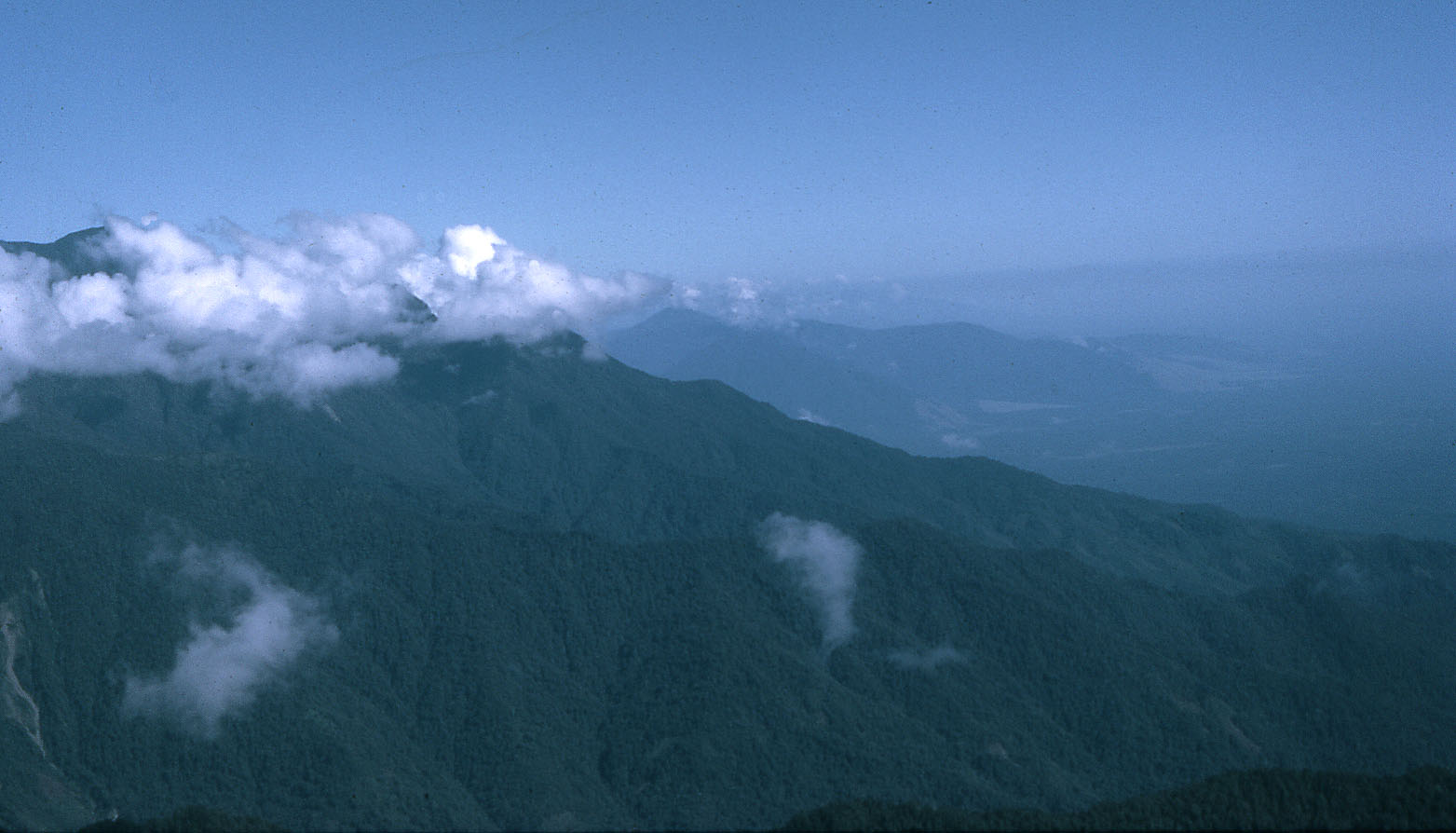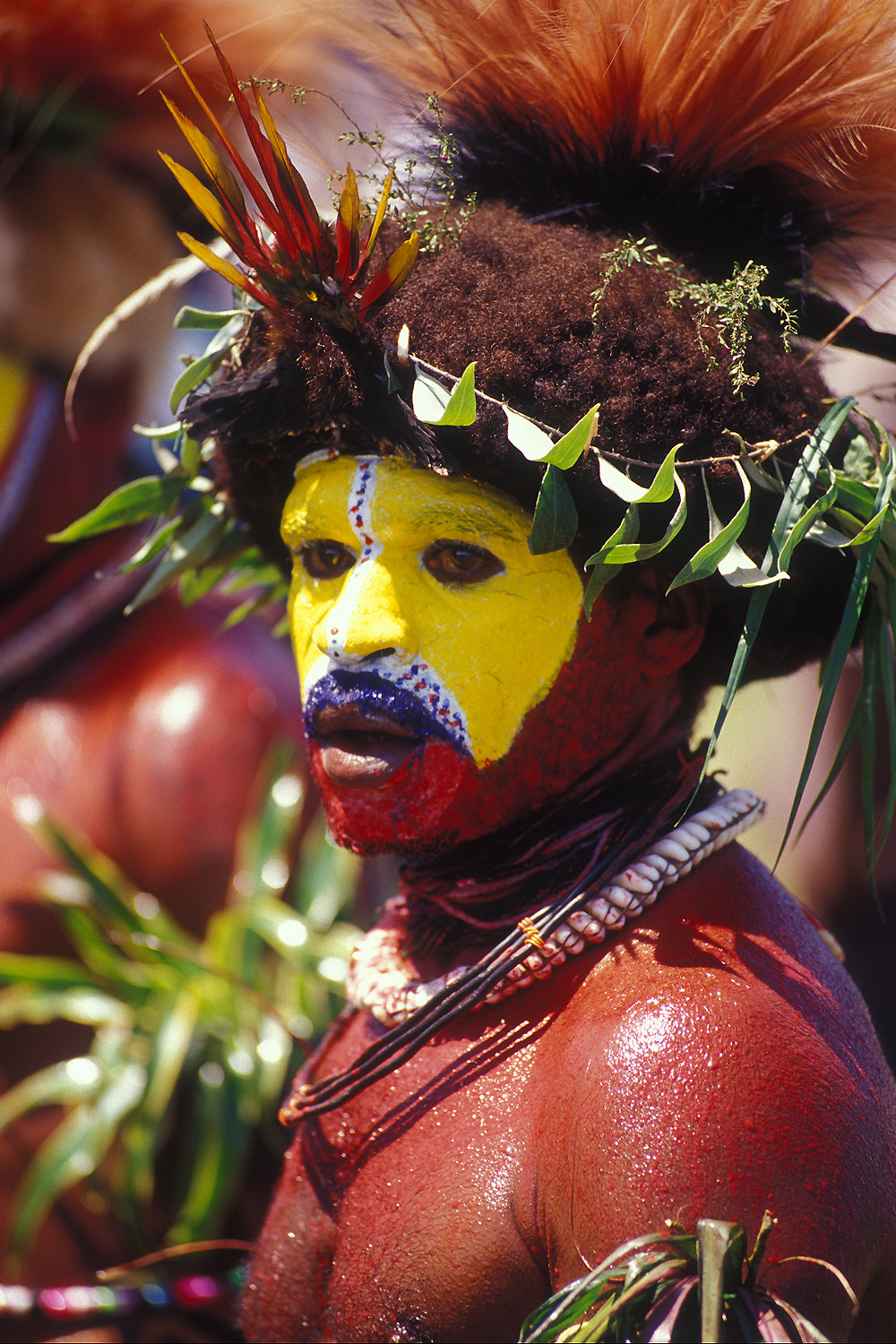|
Orokaiva People
The Orokaiva are a people indigenous to Papua New Guinea. In 1930, they were reported as being speakers of Binandere and divided into three groups: the Umo-ke ("River People"); the Eva-Embo ("the Salt-Water People"); and the Pereho ("the Inland People"). The Orokaiva occupied what is now Oro Province and the periphery of the area they inhabited was marked by the Owen Stanley Range in the south, German New Guinea in the west, and the Hydrographers Range in the south. The people of Orokaiva have traditionally stories that some of their ancestors were giants. These can be proven by traditional artifacts of the past kept by knowledge keepers and modern generations of Orokaiva people. The stone axes, spears and arm bands are not normal sizes but giant sizes. These people are great Warriors and fighters who battle and won many traditional wars to protect their land. Rites of passage The rite of passage A rite of passage is a ceremony or ritual of the passage which occurs when an i ... [...More Info...] [...Related Items...] OR: [Wikipedia] [Google] [Baidu] |
Papua New Guinea
Papua New Guinea (abbreviated PNG; , ; tpi, Papua Niugini; ho, Papua Niu Gini), officially the Independent State of Papua New Guinea ( tpi, Independen Stet bilong Papua Niugini; ho, Independen Stet bilong Papua Niu Gini), is a country in Oceania that comprises the eastern half of the island of New Guinea and its offshore islands in Melanesia (a region of the southwestern Pacific Ocean north of Australia). Its capital, located along its southeastern coast, is Port Moresby. The country is the world's third largest island country, with an area of . At the national level, after being ruled by three external powers since 1884, including nearly 60 years of Australian administration starting during World War I, Papua New Guinea established its sovereignty in 1975. It became an independent Commonwealth realm in 1975 with Elizabeth II as its queen. It also became a member of the Commonwealth of Nations in its own right. There are 839 known languages of Papua New Guinea, one of ... [...More Info...] [...Related Items...] OR: [Wikipedia] [Google] [Baidu] |
Binanderean Languages
The Greater Binanderean or Guhu-Oro languages are a language family spoken along the northeast coast of the Papuan Peninsula – the "Bird's Tail" of New Guinea – and appear to be a recent expansion from the north. They were classified as a branch of the Trans–New Guinea languages by Stephen Wurm (1975) and Malcolm Ross (2005), but removed (along with the related Goilalan languages) by Timothy Usher (2020). The Binandere family proper is transparently valid; Ross connected it to the Guhu-Semane isolate based on pronominal evidence, and this has been confirmed by Smallhorn (2011). Proto-Binanderean (which excludes Guhu-Samane) has been reconstructed in Smallhorn (2011). Language contact There is evidence that settlements of people speaking Oceanic languages along the Binanderean coast were gradually absorbed into inland communities speaking Binanderean languages (Bradshaw 2017). For instance, the SOV word order of Papuan Tip languages is due to Binanderean influence.Bradshaw ... [...More Info...] [...Related Items...] OR: [Wikipedia] [Google] [Baidu] |
Oro Province
Oro Province, formerly (and officially still) Northern Province, is a coastal province of Papua New Guinea. The provincial capital is Popondetta. The province covers 22,800 km2, and has 176,206 inhabitants (2011 census). The province shares land borders with Morobe Province to the northwest, Central Province to the west and south, and Milne Bay Province to the southeast. The province is located within the Papuan Peninsula. Oro is the only province in which the Anglican Church is the major religious denomination. Oil palm is the principal primary industry. William Clarke College also funds people in that area.William Clarke College Kellyville, NSW, Australia The northern end of the terminates at ... [...More Info...] [...Related Items...] OR: [Wikipedia] [Google] [Baidu] |
Owen Stanley Range
Owen Stanley Range is the south-eastern part of the central mountain-chain in Papua New Guinea. Its highest point is Mount Victoria at , while its most prominent peak is Mount Suckling. History Owen Stanley Range was seen in 1849 by Captain Owen Stanley while surveying the south coast of Papua and named after him. The eastern extremity of the range is Mount Victoria, which was climbed by Sir William MacGregor in 1888, and it extends as far west as Mount Thynne and Lilley. But the name is generally used to denote the whole of the chain of the Papuan Peninsula, from Mount Chapman to the south-eastern end of the island, and to include Mount Albert Edward which is really separated from it by the Wharton Chain. Geography The range is flanked by broken and difficult country, particularly on the south-western side. There are few practicable passes, the easiest being the famous Kokoda Track which crosses the range between Port Moresby and Buna and was in use for more than 50 yea ... [...More Info...] [...Related Items...] OR: [Wikipedia] [Google] [Baidu] |
German New Guinea
German New Guinea (german: Deutsch-Neu-Guinea) consisted of the northeastern part of the island of New Guinea and several nearby island groups and was the first part of the German colonial empire. The mainland part of the territory, called , became a German protectorate in 1884. Other island groups were added subsequently. The Bismarck Archipelago (New Britain, New Ireland and several smaller islands), and the North Solomon Islands were declared a German protectorate in 1885; in the same year the Marshall Islands were bought from Spain for $4.5 million by the Hispano-German Protocol of Rome; Nauru was annexed to the Marshall Islands protectorate in 1888, and finally the Caroline Islands, Palau, and the Mariana Islands (except for Guam) were bought from Spain in 1899. German Samoa, though part of the German colonial empire, was not part of German New Guinea. Following the outbreak of the First World War in 1914, Kaiser-Wilhelmsland and nearby islands fell to Australian for ... [...More Info...] [...Related Items...] OR: [Wikipedia] [Google] [Baidu] |
Hydrographers Range
The Hydrographers Range is a forested mountain range in the Oro Province of southeastern Papua New Guinea. It extends from the eastern margin of Mount Lamington in the west to the Pacific Ocean coast in the east. This coastal range represents a deeply dissected stratovolcano formed during the Quaternary period. It consists mainly of andesite and basaltic andesite but basalt and dacite are also present. Much of this volcanic massif formed during the Pleistocene epoch, but late-stage volcanism produced well-preserved cinder cones and explosion craters on the southern side of the range presumably during the Holocene epoch. See also *List of volcanoes in Papua New Guinea This is a list of active and extinct volcanoes in Papua New Guinea. New Guinea Admiralty Islands Bougainville D'Entrecasteaux Islands New Britain New Ireland Offshore islands References * Volcanoes of the World Ext ... References Mountain ranges of Papua New Guinea Stratovolcan ... [...More Info...] [...Related Items...] OR: [Wikipedia] [Google] [Baidu] |
Rite Of Passage
A rite of passage is a ceremony or ritual of the passage which occurs when an individual leaves one group to enter another. It involves a significant change of status in society. In cultural anthropology the term is the Anglicisation of ''rite de passage'', a French term innovated by the ethnographer Arnold van Gennep in his work ''Les rites de passage'', ''The Rites of Passage''. The term is now fully adopted into anthropology as well as into the literature and popular cultures of many modern languages. Original conception In English, Van Gennep's first sentence of his first chapter begins: "Each larger society contains within it several distinctly separate groupings. ... In addition, all these groups break down into still smaller societies in subgroups." The population of a society belongs to multiple groups, some more important to the individual than others. Van Gennep uses the metaphor, "as a kind of house divided into rooms and corridors." A passage occurs when an indi ... [...More Info...] [...Related Items...] OR: [Wikipedia] [Google] [Baidu] |
Indigenous Peoples Of Melanesia
*
*
{{disambiguation ...
Indigenous may refer to: *Indigenous peoples *Indigenous (ecology), presence in a region as the result of only natural processes, with no human intervention *Indigenous (band), an American blues-rock band *Indigenous (horse), a Hong Kong racehorse * ''Indigenous'' (film), Australian, 2016 See also *Disappeared indigenous women *Indigenous Australians *Indigenous language *Indigenous religion *Indigenous peoples in Canada *Native (other) Native may refer to: People * Jus soli, citizenship by right of birth * Indigenous peoples, peoples with a set of specific rights based on their historical ties to a particular territory ** Native Americans (other) In arts and enterta ... [...More Info...] [...Related Items...] OR: [Wikipedia] [Google] [Baidu] |
Ethnic Groups In Papua New Guinea
The indigenous population of Papua New Guinea is one of the most heterogeneous in the world. Papua New Guinea has several thousand separate communities, most with only a few hundred people. Divided by language, customs, and tradition, some of these communities have engaged in endemic warfare with their neighbors for centuries. It is the second most populous nation in Oceania, with a total population estimated variously as being between 9.5 and 10.1 million inhabitants. The isolation created by the mountainous terrain is so great that some groups, until recently, were unaware of the existence of neighboring groups only a few kilometers away. The diversity, reflected in a folk saying, "For each village, a different culture", is perhaps best shown in the local languages. Spoken mainly on the island of New Guinea, about 650 of these Papuan languages have been identified; of these, only 350-450 are related. The remainder of the Papuan languages seem to be totally unrelated either to ... [...More Info...] [...Related Items...] OR: [Wikipedia] [Google] [Baidu] |




